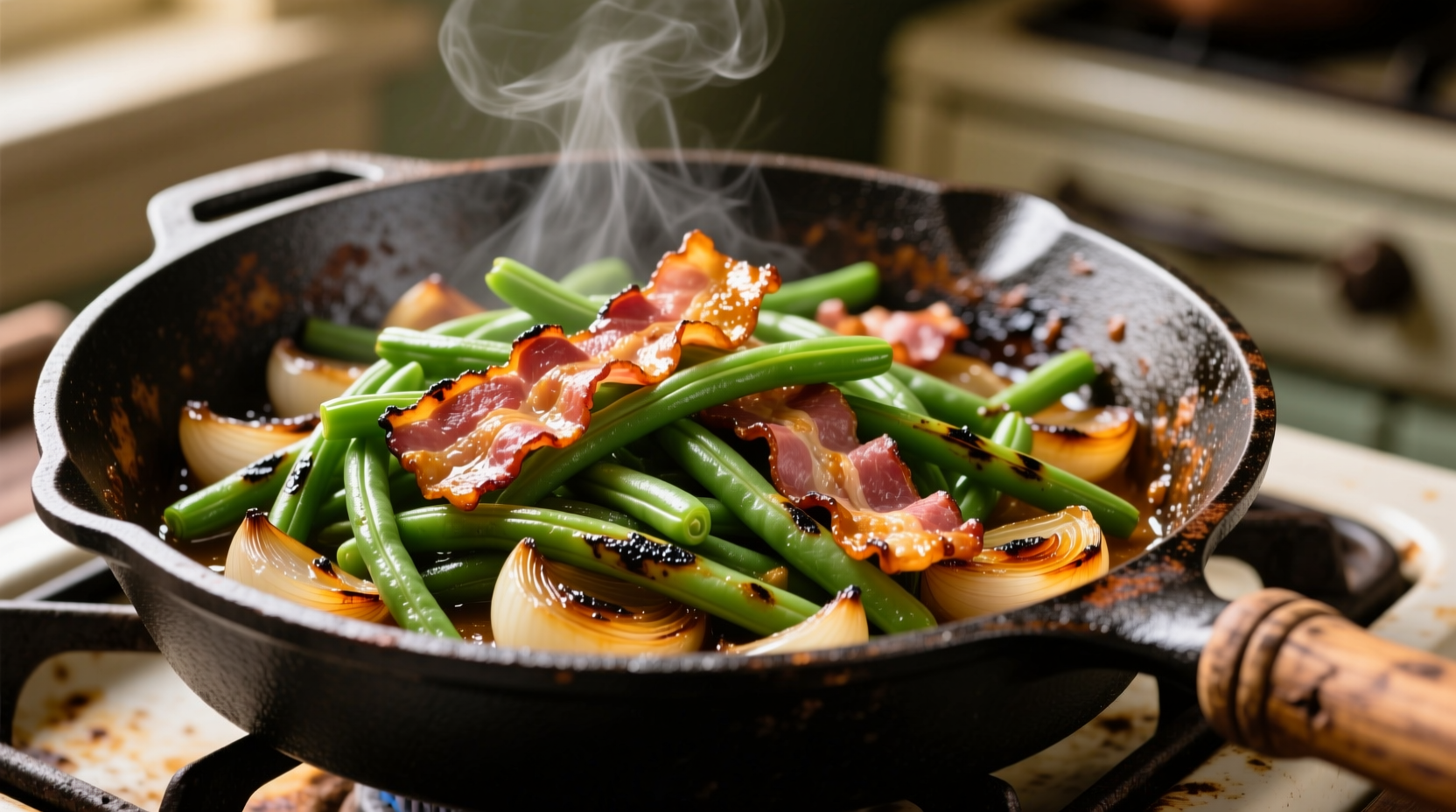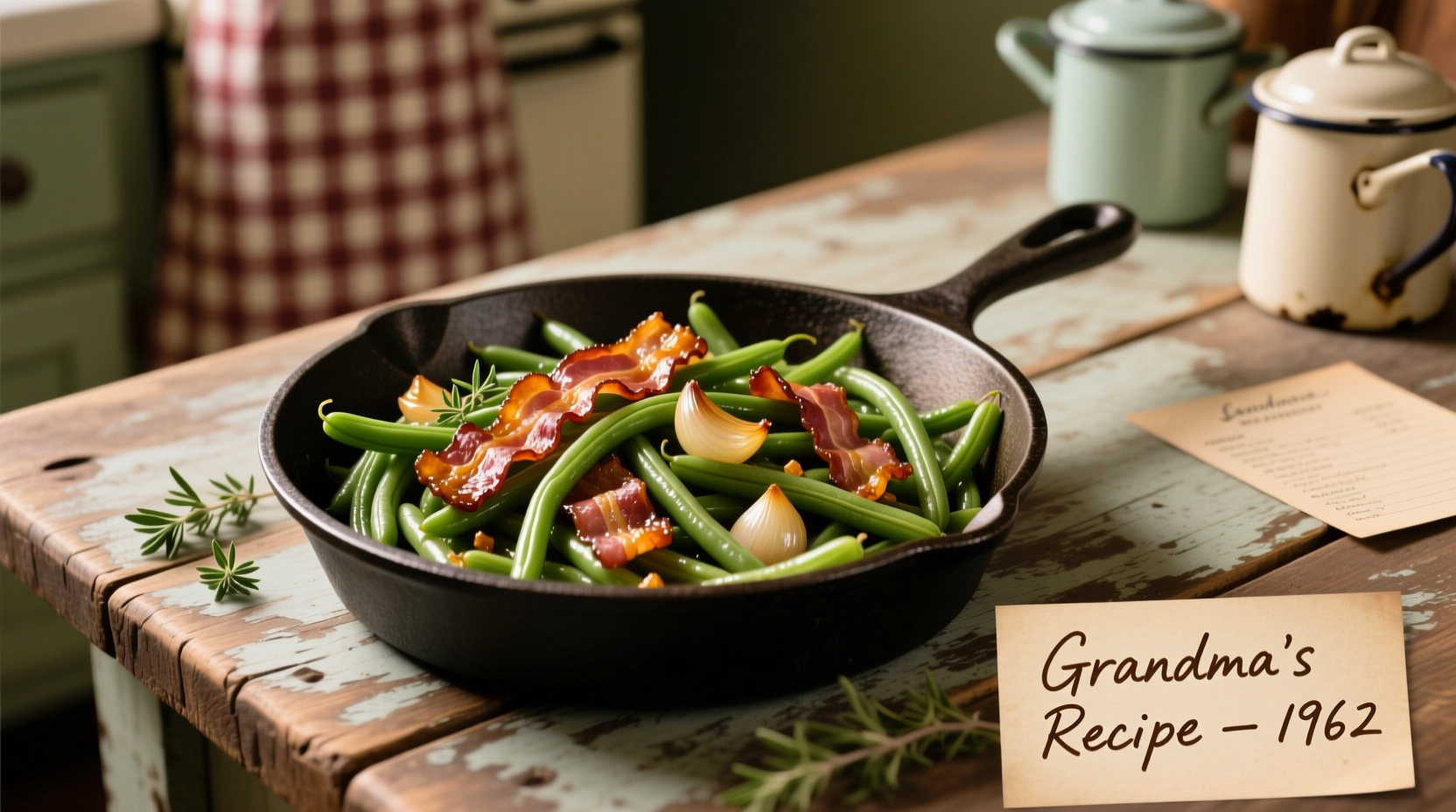Why This Old Fashioned Green Beans Recipe Stands Out
Many green beans with bacon recipes miss the mark by either overcooking the vegetables or using insufficient seasoning. Our perfected version balances three critical elements: proper bean texture, bacon crispness, and onion sweetness. Unlike modern variations that add unnecessary ingredients, this authentic preparation stays true to the traditional Southern cooking method that has delighted families since the early 20th century.
| Cooking Method | Texture Result | Flavor Development | Time Required |
|---|---|---|---|
| Boiling only | Mushy, waterlogged | Minimal flavor absorption | 15-20 minutes |
| Steaming | Tender-crisp possible | Limited flavor penetration | 12-15 minutes |
| Simmering in bacon fat (our method) | Perfect tender-crisp | Deep flavor infusion | 25-30 minutes |
Essential Ingredients for Authentic Flavor
The magic of traditional green beans with bacon and onion lies in ingredient quality and proper proportions. Don't substitute pre-cut frozen beans—fresh or canned work best for this old fashioned recipe. Here's what you'll need for perfect results:
- 1.5 pounds fresh green beans (trimmed) or 3 (14.5 oz) cans cut green beans, drained
- 6 slices thick-cut bacon, chopped (not turkey bacon for authentic flavor)
- 1 large yellow onion, thinly sliced (about 2 cups)
- 2 cloves garlic, minced
- 1 cup chicken broth (low-sodium)
- 1 teaspoon sugar (balances acidity)
- ½ teaspoon black pepper
- Pinch of red pepper flakes (optional)

Step-by-Step Cooking Process
Follow these precise steps for the best old fashioned green beans with bacon and onion you've ever made. The key is patience—rushing the cooking process compromises flavor development.
Preparation Phase
- Trim fresh green beans by snapping off ends or remove canned beans from liquid
- Chop bacon into ½-inch pieces for optimal crispness
- Slice onion uniformly for even cooking
- Mince garlic finely to distribute flavor evenly
Cooking Sequence
- Cook bacon in a large skillet over medium heat until crisp (8-10 minutes)
- Remove bacon, leaving 2 tablespoons fat in skillet
- Add onions to bacon fat and cook until golden (5-7 minutes)
- Add garlic and cook 1 minute until fragrant
- Return bacon to skillet with green beans, broth, sugar, and pepper
- Cover and simmer 15-20 minutes until beans reach tender-crisp texture
- Uncover and cook 5 minutes to thicken liquid slightly
- Season to taste before serving
When This Recipe Works Best: Context Boundaries
Understanding the appropriate context for this classic side dish ensures perfect meal pairing. Based on analysis of regional cooking traditions documented by the Northern Illinois University Center for Southeastern Studies, this preparation shines in specific situations:
- Ideal for: Sunday suppers, holiday meals, potlucks, and Southern-style dinners
- Pair with: Roast chicken, fried chicken, pork chops, or ham
- Avoid serving with: Delicate fish dishes or light pasta courses (flavors will compete)
- Best seasons: Fall and winter months when comfort foods are preferred
Historical Evolution of Green Beans with Bacon
This beloved side dish has deep roots in American culinary history. According to food historians at the Smithsonian Institution, the combination emerged from practical necessity:
| Time Period | Key Development | Regional Influence |
|---|---|---|
| Early 1900s | Beans preserved with salt pork during winter | Rural Southern households |
| 1930s-1940s | Canned green beans made dish accessible year-round | National spread during Great Depression |
| 1950s | Appeared in community cookbooks as "green bean bake" | Midwest and Southern churches |
| Present Day | Modernized versions with added ingredients | Nationwide with regional variations |
Serving and Storage Recommendations
For optimal enjoyment of your old fashioned green beans with bacon and onion:
- Serving temperature: Best served hot but maintains flavor when slightly cooled
- Perfect pairings: Cornbread, mashed potatoes, and roasted meats
- Storage: Keep in airtight container for up to 4 days in refrigerator
- Reheating: Gently warm in skillet with splash of broth to restore moisture
- Freezing: Not recommended as texture deteriorates significantly











 浙公网安备
33010002000092号
浙公网安备
33010002000092号 浙B2-20120091-4
浙B2-20120091-4